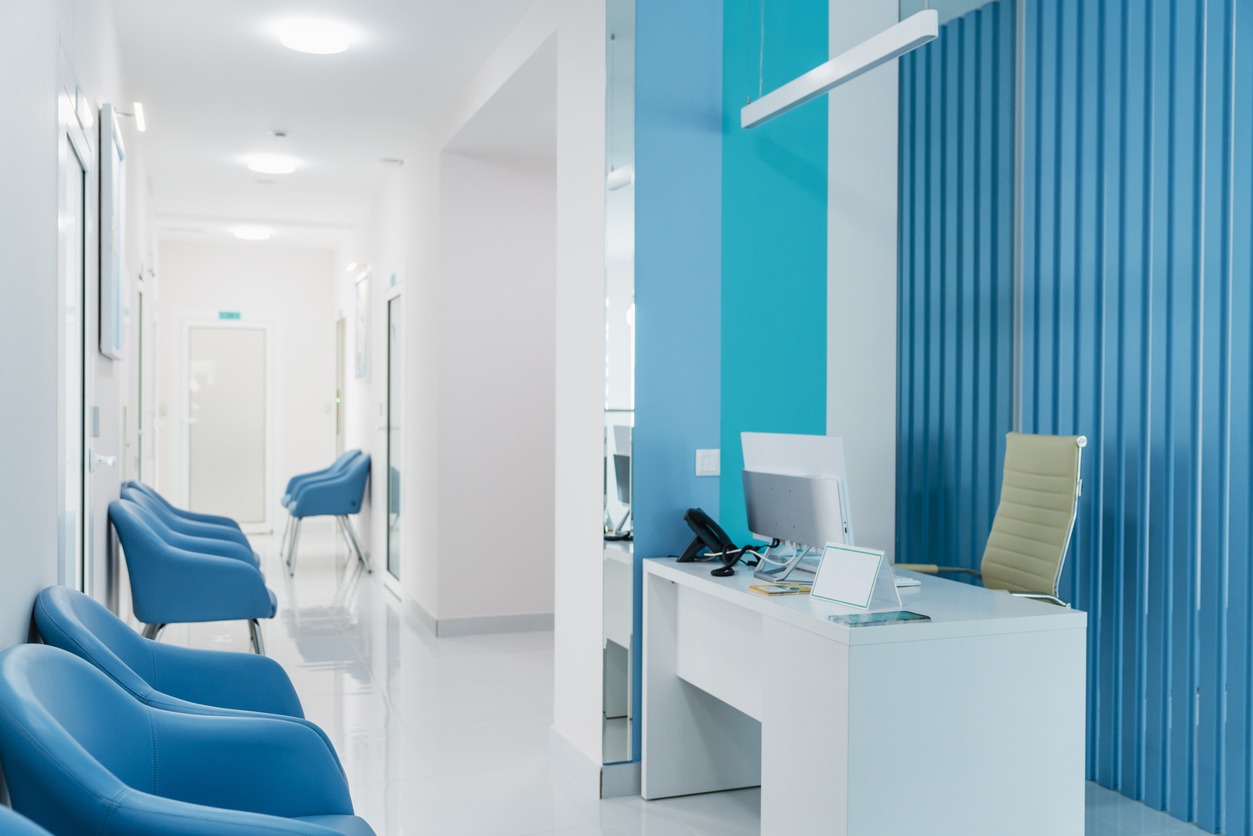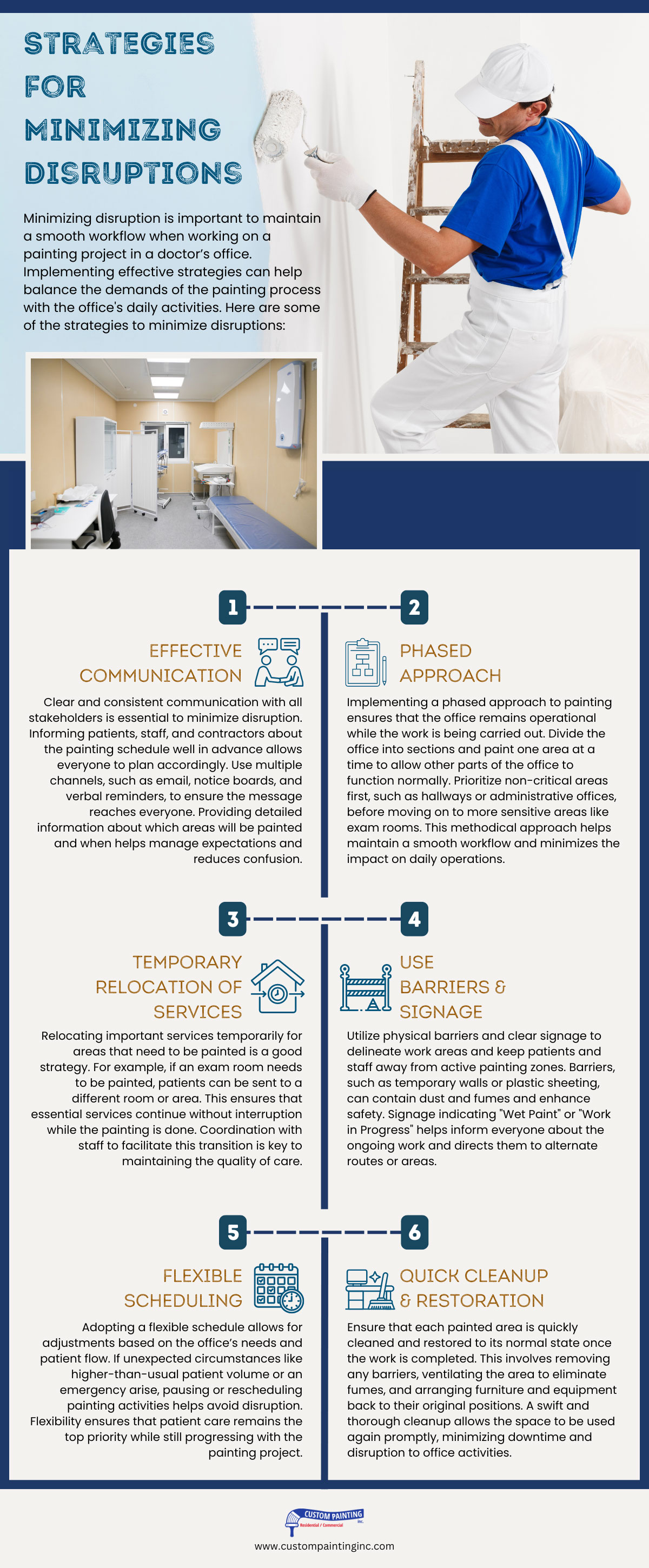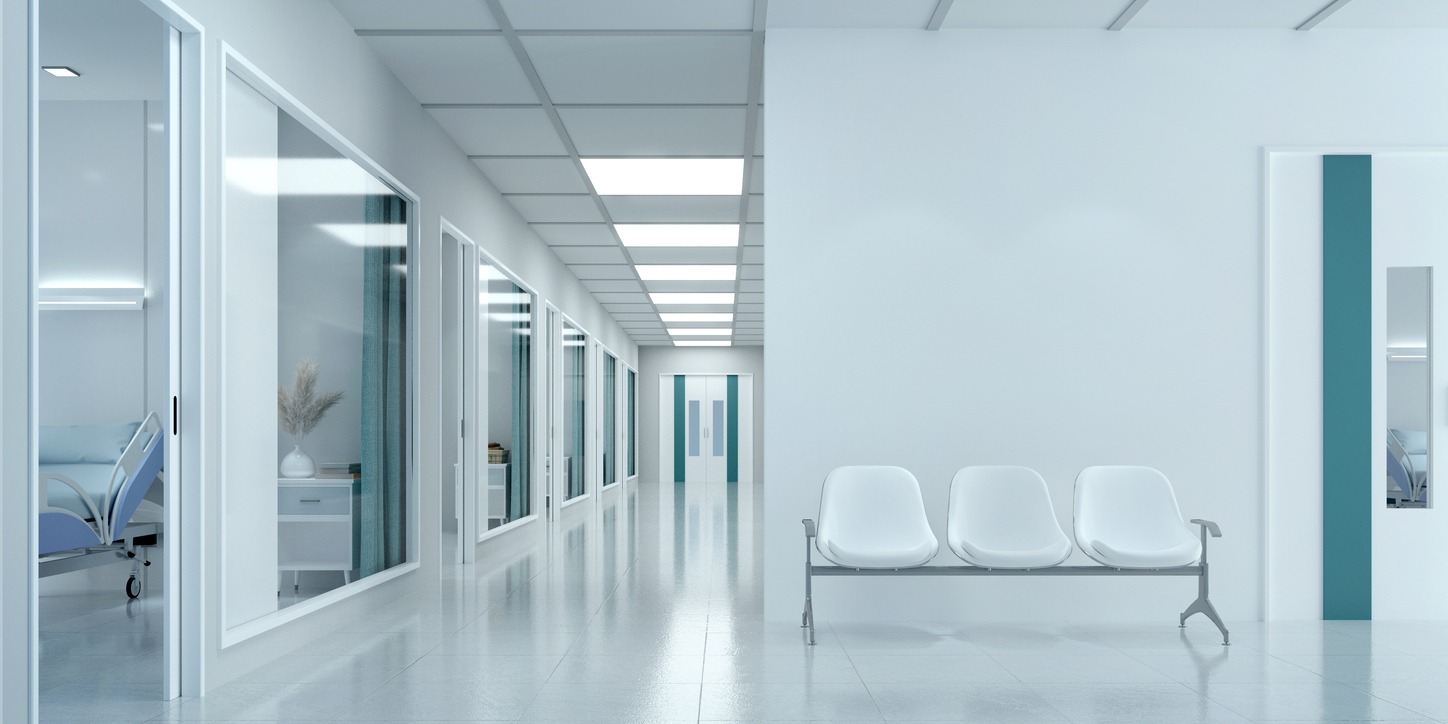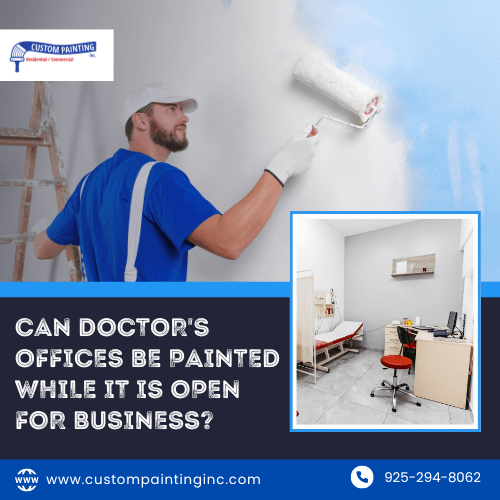Painting a doctor’s office while it’s open for business might seem challenging. Balancing the needs of patients, staff, and the painting crew requires careful planning and execution. In this article, we will discuss the possibility of such a project, explore the challenges of this type of project, and discuss possible solutions. We will also tackle the key factors that influence whether painters can effectively and efficiently work in a medical environment without compromising the quality of care or the integrity of their work.
Considerations Before Painting
Here are several crucial considerations that need to be addressed to ensure a smooth and safe painting process:
Health and Safety Concerns for Patients and Staff
Health and safety should be a priority when planning to paint a doctor’s office while it remains open. Paint fumes and dust can be a risk to patients, particularly those with respiratory issues, allergies, or compromised immune systems. It is essential to use low-VOC or zero-VOC paints, which emit fewer harmful chemicals.
Adequate ventilation is crucial to maintaining fresh air circulation. Scheduling painting during off-peak hours or in phases can also minimize patient and staff exposure to potential hazards. These measures ensure that the environment remains safe and comfortable for everyone.
Legal and Regulatory Considerations
Compliance with health codes and regulations is critical to painting a medical facility. Guidelines exist for using chemicals and maintaining indoor air quality in healthcare settings. It is important to consult with local health departments and regulatory bodies first to ensure that all actions adhere to the laws.
These may include getting special permits and following protocols to protect people. Non-compliance can result in legal repercussions and compromise the health and safety of patients and staff. That’s why meticulous attention to these regulations is important.

Determining the Scope of Work and the Areas Affected
Understanding the full scope of the project is essential for efficient planning and execution. This involves identifying the specific areas that need painting, estimating the time needed for each section, and planning around the office’s schedule. Coordination with medical staff is important to identify critical areas that must remain operational and those that can be temporarily closed.
A detailed plan outlining the sequence of work, timing, and necessary precautions will help ensure the project proceeds smoothly. Clear communication with everyone involved will ensure that the painting project enhances the office environment without compromising its functionality or the quality of care provided.
Planning and Preparation

Choosing the Right Time for Painting
Timing is crucial when painting a doctor’s office that remains open for business. The goal is to minimize disruptions to patients and staff while ensuring the work is completed efficiently. Here are some tips for the right time for painting:
- Opt for after-hours, weekends, or holidays to minimize disruptions.
- Avoid painting during peak hours to reduce the impact on patients and staff.
- Schedule work during periods when the office is closed to allow uninterrupted painting.
Selecting Low-Fume, Fast-Drying Paints
It is important to use safe and suitable paints for indoor use in a medical setting. Here are some tips for choosing paints:
- Use low-VOC or zero-VOC paints to minimize harmful emissions.
- Choose fast-drying paints to reduce downtime and allow rooms to be used sooner.
- Select high-quality, durable paints designed for indoor use to ensure longevity and safety.
Coordination with Office Staff to Schedule Painting in Phases
Effective coordination with office staff is key to a successful painting project. Scheduling the painting in phases allows the office to remain operational while work is being done. Here are a few tips:
- Break down the project into manageable sections to maintain office operations.
- Identify which areas can be temporarily closed and coordinate with staff accordingly.
- Communicate the painting schedule clearly to all staff to ensure a smooth process and minimal disruption.
Strategies for Minimizing Disruptions

Minimizing disruption is important to maintain a smooth workflow when working on a painting project in a doctor’s office. Implementing effective strategies can help balance the demands of the painting process with the office’s daily activities. Here are some of the strategies to minimize disruptions:
1. Effective Communication
Clear and consistent communication with all stakeholders is essential to minimize disruption. Informing patients, staff, and contractors about the painting schedule well in advance allows everyone to plan accordingly. Use multiple channels, such as email, notice boards, and verbal reminders, to ensure the message reaches everyone. Providing detailed information about which areas will be painted and when helps manage expectations and reduces confusion.
2. Phased Approach
Implementing a phased approach to painting ensures that the office remains operational while the work is being carried out. Divide the office into sections and paint one area at a time to allow other parts of the office to function normally. Prioritize non-critical areas first, such as hallways or administrative offices, before moving on to more sensitive areas like exam rooms. This methodical approach helps maintain a smooth workflow and minimizes the impact on daily operations.
3. Temporary Relocation of Services
Relocating important services temporarily for areas that need to be painted is a good strategy. For example, if an exam room needs to be painted, patients can be sent to a different room or area. This ensures that essential services continue without interruption while the painting is done. Coordination with staff to facilitate this transition is key to maintaining the quality of care.
4. Use Barriers and Signage
Utilize physical barriers and clear signage to delineate work areas and keep patients and staff away from active painting zones. Barriers, such as temporary walls or plastic sheeting, can contain dust and fumes and enhance safety. Signage indicating “Wet Paint” or “Work in Progress” helps inform everyone about the ongoing work and directs them to alternate routes or areas. This proactive approach minimizes accidental exposure and maintains a safe environment.
5. Flexible Scheduling
Adopting a flexible schedule allows for adjustments based on the office’s needs and patient flow. If unexpected circumstances like higher-than-usual patient volume or an emergency arise, pausing or rescheduling painting activities helps avoid disruption. Flexibility ensures that patient care remains the top priority while still progressing with the painting project.
6. Quick Cleanup and Restoration
Ensure that each painted area is quickly cleaned and restored to its normal state once the work is completed. This involves removing any barriers, ventilating the area to eliminate fumes, and arranging furniture and equipment back to their original positions. A swift and thorough cleanup allows the space to be used again promptly, minimizing downtime and disruption to office activities.

Communication with Patients and Staff
Effective communication with patients and staff is important. Keeping everyone informed and involved helps ensure a smooth process, minimizes confusion, and maintains a safe and comfortable environment. Here are the strategies for effective communication with patients and staff:
Informing Patients
Clear and timely communication with patients is vital to ensure they are aware of the painting project and how it might affect their visit. Here are a few tips:
- Use Multiple Channels: Communicate through emails, phone calls, and signage within the office.
- Provide Specific Details: Share information about the timing and areas affected by the painting.
- Reassure Patients: Explain measures being taken to maintain a safe environment, such as using low-VOC paints and ensuring proper ventilation.
- Offer Navigation Information: Inform patients about alternate entrances or temporary changes in room assignments.
Engaging Staff
Effective communication with office staff is crucial for the seamless execution of the painting project. Here are ways to do this:
- Hold Meetings: Inform staff about the schedule, scope of work, and safety measures.
- Distribute Memos: Provide written details to ensure everyone is aware of the project.
- Encourage Feedback: Allow staff to express concerns and suggestions.
- Foster Collaboration: Use open dialogue to gather valuable insights and mitigate potential issues.
Utilizing Visual Aids
Visual aids such as signage and maps can enhance communication efforts. Here are some tips on how you can do this:
- Place Clear Signs: Indicate areas under construction and alternate routes with visible signage.
- Use Maps: Guide patients and staff through temporary changes in the office layout.
- Provide Timelines: Display expected timelines for each project phase to reduce confusion.
Regular Updates
Maintaining regular updates throughout the project keeps everyone informed of progress and any changes to the schedule. Here’s how you can keep everyone updated:
- Maintain Consistency: Provide weekly or bi-weekly updates via emails, newsletters, or bulletin boards.
- Include Key Information: Share progress, upcoming work, and any adjustments to the plan.
- Foster Transparency: Keep everyone informed to build trust and reduce anxiety.
Feedback Mechanisms
Establishing feedback mechanisms allows patients and staff to voice their concerns or suggestions during the painting project. Here are ways to implement this:
- Offer Easy Channels: Provide suggestion boxes, email addresses, or dedicated phone lines for feedback.
- Actively Listen: Respond to feedback to demonstrate a commitment to maintaining a positive environment.
- Address Issues Promptly: Ensure the needs of patients and staff are met throughout the project.
Conclusion
To paint a doctor’s office while it remains open, careful planning, clear communication, and strategic execution are required. The project can be completed effectively by addressing health and safety concerns, complying with regulations, and coordinating effectively with staff and patients.
If you need professional painting services for your medical office, contact Custom Painting, Inc. today. You may contact us at 925-294-8062 or fill out our contact form to get started. Let us help you create a fresh, inviting space without compromising your daily operations.

